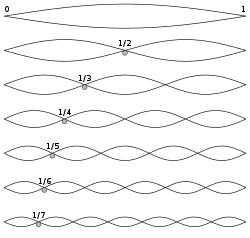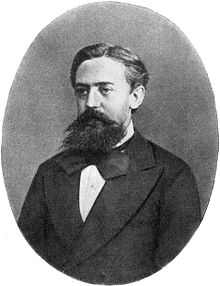Making Music With Code

Sound check. Reset clock before starting.
What is This?
What Is This
What Is This
- A spiritual sequel of a demo/talk I gave at Brooklyn.js back in 2018 about making hip hop with JavaScript.
What Is This
A spiritual sequel of a demo/talk I gave at Brooklyn.js back in 2018 about making hip hop with JavaScript.
An overview of algorithmic composition with some ML approaches covered at the end.
What Is This
A spiritual sequel of a demo/talk I gave at Brooklyn.js back in 2018 about making hip hop with JavaScript.
An overview of algorithmic composition with some ML approaches covered at the end.
A collection of data viz, tech demos & experiments using WebAudio API and various JavaScript/Python tools.
Who Am I?
Who Am I?
Who Am I?
I'm omar delarosa. 👋
I'm a Senior Engineer at Spotify. 🎶
I play music in my spare time. 🎸 🎹
Who Am I?
I'm omar delarosa. 👋
I'm a Senior Engineer at Spotify. 🎶
I play music in my spare time. 🎸 🎹
I studied (almost) a minor's-worth of music theory courses. 👶🎼
Who Am I?
I'm omar delarosa. 👋
I'm a Senior Engineer at Spotify. 🎶
I play music in my spare time. 🎸 🎹
I studied (almost) a minor's-worth of music theory courses. 👶🎼
I studied a master's-worth of computer science courses. 🤖🎓
Who Am I?
I'm omar delarosa. 👋
I'm a Senior Engineer at Spotify. 🎶
I play music in my spare time. 🎸 🎹
I studied (almost) a minor's-worth of music theory courses. 👶🎼
I studied a master's-worth of computer science courses. 🤖🎓
Why This?
Why This?
Why This?
- Maybe you know how to code 💻
Why This?
Maybe you know how to code 💻
... but you don't play any instruments
Why This?
Maybe you know how to code 💻
... but you don't play any instruments
... and you want to make music 🎸
Why This?
Maybe you know how to code 💻
... but you don't play any instruments
... and you want to make music 🎸
This offers some ideas 🤔
Agenda
- Basics 👶
Agenda
Basics 👶
- Music Theory 🎶
Agenda
Basics 👶
Music Theory 🎶
Music Graphs 🕸
Agenda
Basics 👶
Music Theory 🎶
Music Graphs 🕸
Markov Chains ⛓
Agenda
Basics 👶
Music Theory 🎶
Music Graphs 🕸
Markov Chains ⛓
- Advanced 👴
Agenda
Basics 👶
Music Theory 🎶
Music Graphs 🕸
Markov Chains ⛓
Advanced 👴
- Vectorizing Music ♾
Agenda
Basics 👶
Music Theory 🎶
Music Graphs 🕸
Markov Chains ⛓
Advanced 👴
Vectorizing Music ♾
Machine Learning and Music 🤖
What is Music? 🤔
Sound Waves

Individual Frequencies Are Perceived as Tones
Random Tone Frequencies
Special Frequencies
Special Frequencies
Frequences like
440hzare named notes such asA4(more info)Exact tunings can vary by instrument and styles
Special Frequencies
Frequences like
440hzare named notes such asA4(more info)Exact tunings can vary by instrument and styles
- See also:
Special Frequencies
Frequences like
440hzare named notes such asA4(more info)Exact tunings can vary by instrument and styles
- See also:
- Definitions:
- a note is named tone

- a scale is ordered set of notes

- a note is named tone
Random Named Notes from the Same Scale
Harmony

Harmony
Harmony
- Relationships between sound waves
Harmony
Relationships between sound waves
Often occurs when multiple waves oscillate at whole number ratios with each other
Definitions:
Harmony
Relationships between sound waves
Often occurs when multiple waves oscillate at whole number ratios with each other
Definitions:
- melody - a sequence of tones over time
- chord - tones at the same time, named after the component notes
- chord progression - a sequence of chords over time:
- melody - a sequence of tones over time
Rhythm
Rhythm
duration - how long a tone lasts
beat - a single unit of rhythm

measure - a regularly spaced group of beats

Rhythm & Fractions
- Durations are all described as fractions of a measure
Rhythm & Fractions
Durations are all described as fractions of a measure
1/4 Note

Rhythm & Fractions
Durations are all described as fractions of a measure
1/4 Note

1/8 Note

Rhythm & Fractions
Durations are all described as fractions of a measure
1/4 Note

1/8 Note

1/16 Note

Fun With Fractions
- Not all are multiples of 2.
Fun With Fractions
Not all are multiples of 2.
Some interesting things happen when you mix up durations where the denominator of the fraction is a multiple of 3.

Fun With Fractions
Not all are multiples of 2.
Some interesting things happen when you mix up durations where the denominator of the fraction is a multiple of 3.

- This is common in generes such as hip hop.
Harmony & Rhythm = Pitch & Time

Chopin's Etudes, Opus 10, No.1 as a pianoroll plot
Graphs

Music & Graphs
Music sequences can be thought of as directed walks along the edges of a graph of the state-space in which each discrete* state is a node.
Each state (Sn) can be a single note or a beat or any music element in a sequence of musical events.
*Assume each state in music is discrete. Further discussions of microtonality and certain continuous musical spaces are out of scope in this section.
Music & Finite State Machines

The entire action space of a sequence of music can thus be described using a finite state machine.
Markov Chain
The most straightforward way to produce algorithmic compositions.

"a stochastic model describing a sequence of possible events in which the probability of each event depends only on the state attained in the previous event"
Markov

Andrey Markov, namesake of Markov chains and more.
Note Markov Chain
Avoid talking over synths
Chord Markov Chain
Avoid talking over synths
Beat Markov Chain
Drake Markov Chain
Markov Chains (With Benefits)
Markov Chains (With Benefits)
- Markov chain transition matrices can be learned from a corpus text (or a MIDI file)
Markov Chains (With Benefits)
Markov chain transition matrices can be learned from a corpus text (or a MIDI file)
Data can be represented and stored easily as structured data formats such as JSON
Markov Chains (With Benefits)
Markov chain transition matrices can be learned from a corpus text (or a MIDI file)
Data can be represented and stored easily as structured data formats such as JSON
Can extend to more complex, multi-state transition matrices, but this is outside the scope of this prez.
Music & Code

Rhythm as Code
Beat Grids

Centered around 1/16th note ticks
Can be difficult to "escape the grid" with durations < 1/16.
Also tough to use subdivisions that are multiples of 3.
Rhythm and Computation
Beat Grids as Code
// 16-element arrays can represent rhythm patterns, but are tough to read.const kicks = [1,0,1,0, 0,0,1,0, 0,0,1,0, 0,0,1,0];const snares = [0,0,0,0, 1,0,0,0, 0,0,0,0, 1,0,0,0];const hats = [1,1,1,1, 1,1,1,1, 1,1,1,1, 1,1,1,1];const cowbell = [0,0,0,0, 0,0,0,0, 0,0,0,0, 1,0,1,0];Rhythm Notation
Beat Grids as "Words"
// Easier to read, CPU-trivial preprocessingconst kicks = fmt('1010 0010 0010 0010');const snares = fmt('0000 1000 0000 1000');const hats = fmt('1111 1111 1111 1111');const cowbell = fmt('0000 0000 0000 01010');Rhythm Notation
Beat Grids as Lists of Words (a Language?)
// A list of patternsconst kick_patterns = [ fmt("1010 0010 0010 0010"), fmt("1001 0001 0101 0010"), fmt("1000 0101 0100 0010"), fmt("1000 0010 0000 0100"),];Generative Beats
We could make two pattern sets
const kick_patterns = [ fmt("1010 0010 0010 0010"), fmt("1001 0001 0101 0010"), fmt("1000 0101 0100 0010"), fmt("1000 0010 0000 0100"),];const snare_patterns = [ fmt("0000 1000 0000 1000"), fmt("0010 1000 0000 1010"), fmt("0000 1000 0010 1000"),];Generative Beats
And randomly combine them
const kicks_sequence = [ ..._.sample(kick_patterns), ..._.sample(kick_patterns), ..._.sample(kick_patterns), ..._.sample(kick_patterns),];const snare_sequence = [ ..._.sample(snare_patterns), ..._.sample(snare_patterns), ..._.sample(snare_patterns), ..._.sample(snare_patterns),];playParallel(kicks_sequence, snare_sequence);Generative Beats
Simple Markov Chain Implementation
class MarkovChain { constructor(obj = {}, states = [], initialState = 0) { this.graph = { ...obj }; this.states = [...states]; this.currentState = initialState; } set() { const newState = this.sample(this.graph[this.currentState]); this.currentState = newState; } next() { this.set(); return this.states[this.currentState]; } sample(list) { return list[Math.floor(list.length * Math.random())]; }}Markov Chain of Notes
- Using an adjacency list instead of matrix (for readability, simplicity)
const NOTES = ["C", "D", "E", "F", "G", "A", "B"];const G = { // Repeated notes represent higher probabilities 0: [1, 1, 0, 3, 4, 5, 6], // 0 -> 1 is 2/7, the rest 1/7 1: [0, 0, 2, 3], // 1 -> 0 is 1/2 the others 1/4 2: [1, 3, 4], 3: [4], // 3 -> 4 means state 4 always follows 3 or 1/1 probability 4: [5], 5: [5, 4, 1, 0], 6: [2, 2, 2, 3, 3],};const mc = new MarkovChain(G, NOTES);Markov Chain of Chords
const CHORDS = [ "C maj", "D min", "E min", "F maj", "G maj", "A min", "B dim"];// Favors I <-> IV, V -> I cadencesconst G = { 0: [3, 3, 3, 5], 1: [2, 5], 2: [3], 3: [4, 4, 4, 1, 1], 4: [0, 0, 0, 5], 5: [1, 6], 6: [4],};const mc = new MarkovChain(G, CHORDS);Markov Chain of Rhythm Patterns
// Tuples of duration & number of beatsconst HATS = [ [16, 4], [12, 3], [24, 6], [32, 4], [48, 6], [64, 8],];// Favors steady 1/16 notes -- common in hip hopconst G = { 0: [0, 0, 0, 0, 0, 0, 1, 2, 3, 4], // 0 -> 0 has 3/5 odds 1: [0, 0, 0, 3], 2: [0, 0, 0, 3], 3: [2, 5], 4: [2, 3, 4, 1], 5: [3, 2, 4, 2, 2],};And So...
- Music is a graph.
And So...
Music is a graph.
Music sequences are walks along the edges of those graphs.
And So...
Music is a graph.
Music sequences are walks along the edges of those graphs.
Markov chains are cool.
Advanced Topics

Remember Pitch & Time?

Chopin's Etudes, Opus 10, No.1 as a pianoroll plot
Let's Turn That on Its Side

Discrete Note Spaces
1-D Row Vector Note States
Stacked Row Vectors
Let s = a given state, t = a point in time and i = a note in some scale.

⬇

2-D Matrices Representing Pitch (Columns) and Time (Rows)
Now Let's Get Creative

Hypercube Music

Walking a Hypercube Graph

When scaled up to an 8-D hypercube this can easily represent any diatonic scale such as C Major or B minor.
Hypercube Music Example
And arpeggiator sequence of nearest neighbor "chord nodes" on an 8-D hypercube:
Cellular Automata Music

Cellular Automata Music
Generate row vectors using CA update rules:
Stack them to form music state matrices:

Cellular Automata Music
Sample notes from the state matrices to make melodies or chords:

Machine Learning Music

Chord2Vec
Using a data set of MIDI files, transform notes into chord-name strings and then vectors.
(see word2vec for more information on how this works.)
Chord2Vec
This results in a vector space made of each chord in your dataset

(Each point in this space can be thought of as a node in a graph)
Chord2Vec
Each chord has some number K nearest neighbors in this space.
LLM Music via Suno Prompt

Prompt: Make a chill track in the style of lofi hip hop
And So...
- Beyond Markov Chains there are many other ways to compose algorithmically.
And So...
Beyond Markov Chains there are many other ways to compose algorithmically.
You can use cellular automata
And So...
Beyond Markov Chains there are many other ways to compose algorithmically.
You can use cellular automata
Hypercubes
And So...
Beyond Markov Chains there are many other ways to compose algorithmically.
You can use cellular automata
Hypercubes
NLP tools
And So...
Beyond Markov Chains there are many other ways to compose algorithmically.
You can use cellular automata
Hypercubes
NLP tools
LLMs and beyond
Links
Slides:
Other Links:









